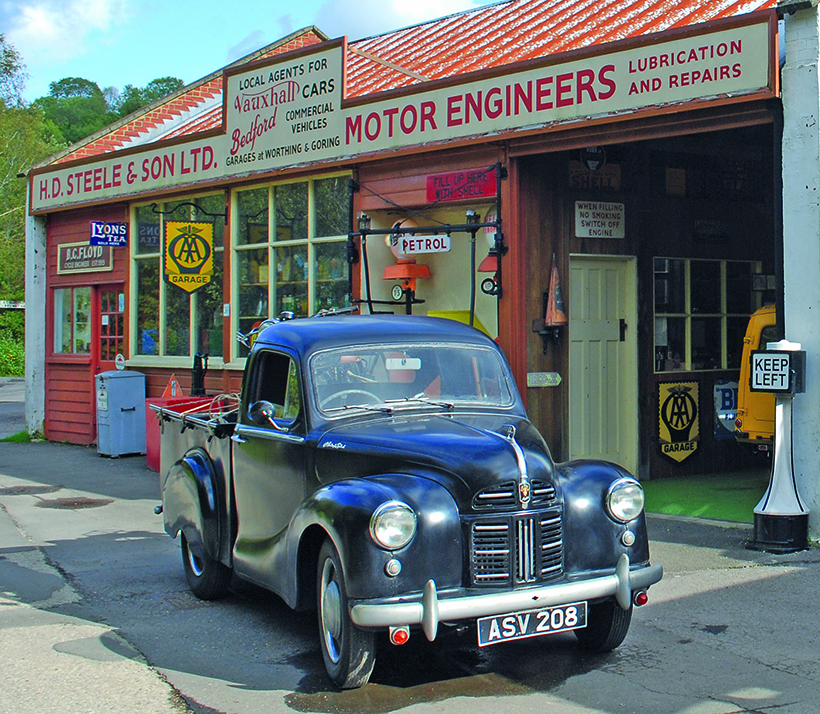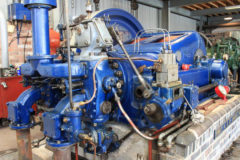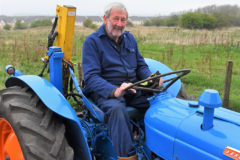A working, 1950s pick-up
Posted by Chris Graham on 21st August 2020
Mike Neale reports on a rare and desirable working, 1950s pick-up that was bought and restored specifically so that it could be used to transport and AJS motorcycle.

A working, 1950s pick-up: When bought, the front was painted black, but the rear, pick-up body was finished in blue. Grant thinks that the rear might have come from another A40 pick-up at some point.
The first, all-new family cars to be launched after World War 2 were the Austin A40 Devon (four-door) and Dorset (two-door), both of which arrived in September, 1947. With a modern body design featuring faired-in headlamps, smooth curves and no running boards, they were quite a change from the re-introduced, pre-war cars that Austin had been producing up until then, and that most of its competitors were still producing. There was even a choice of five colours.
It wasn’t just a modern body hiding pre-war components, either. The chassis, although still separate, was new and featured independent front suspension – a first for Austin. The engine was a new 1,200cc overhead valve unit developing 40hp at 4,300rpm, hence the A40 designation. Hydro-mechanical Girling brakes were fitted and the cars featured 12-volt electrical systems.
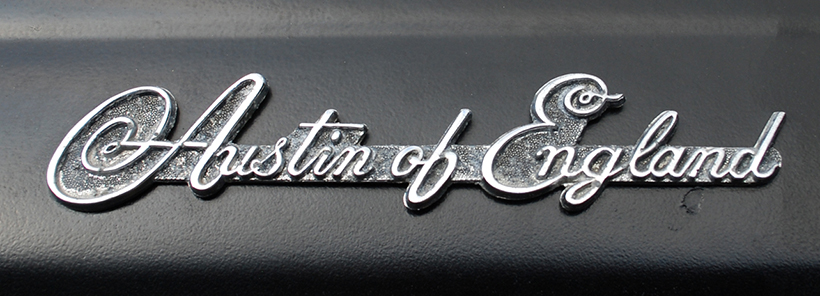
The famous ‘Austin of England’ badging was actually introduced as part of Britain’s post-war export drive. It was last used in 1968, on the final A35 vans.
Important export markets
The new models were a sales success in those all-important, post-war export markets, particularly Australia, Canada and the USA. Early A40s had small, five-inch Lucas 575 headlamps with integral sidelights, but these were replaced, in December 1948, by larger, seven-inch ones with separate sidelights below, to suit US lighting requirements.
Commercial derivatives arrived in 1948, in the form of the van, Countryman (van-based estate) and pick-up. These had bigger, 17in wheels, rather than the 16in saloon wheels, plus larger front wing cut-outs to accommodate them. The gear ratios were also lower. Early vans had aluminium bodies and rear wheel spats, and shared the saloon car’s chrome grille. Later vans were steel-bodied.
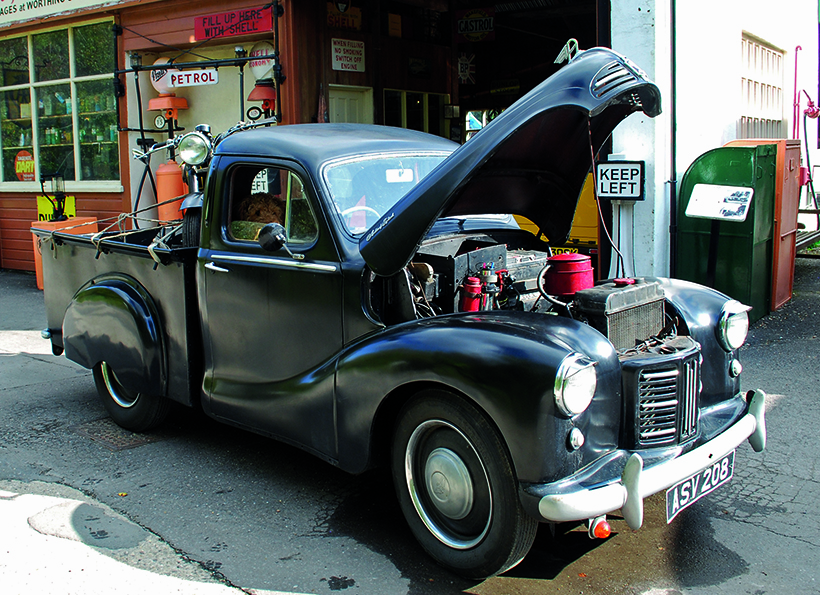
The high-lifting bonnet gives generally good engine access, while the period garage at Amberley provides an appropriate backdrop.
From May 1951, a smaller, painted, pressed-steel radiator grille was fitted to the commercials, featuring vertical chrome bars in the centre and horizontal chrome bars to alternating slats either side. But this was found to provide insufficient cooling so, from August 1951, slots were cut into the leading edge of the bonnet to match, with an additional chrome bar to each side.
Later vans lost the rear wheel spats, although they were retained on the pick-ups throughout, albeit that the shape of these changed, with later ones having a larger cutaway section exposing more of the wheel. From August 1951, Devons gained fully hydraulic brakes, a column gear-change and a new central instrument panel.
A few different pick-up versions were built in Australia, by companies such as Charles Hope of Brisbane, and Lark Hoskins of Sydney. The latter produced a rather stylish Coupe Utility (or Ute), called the Hi-Lite, with rear bodywork flowing through flush with the line of the doors, and a wrap-around, curved Perspex rear window extending further backwards, known as the Astro-type window.
The Dorset was dropped in October 1949, and the Devon saloon was replaced by the Somerset in February 1952. The Devon commercial variants continued, however, receiving the new BMC B-Series 1,200cc engine from September 1954. They were eventually replaced by the A50/A55-based van and pick-up in late 1956 which, of course, stayed in production with just an engine change and light front-end restyle, until 1973.
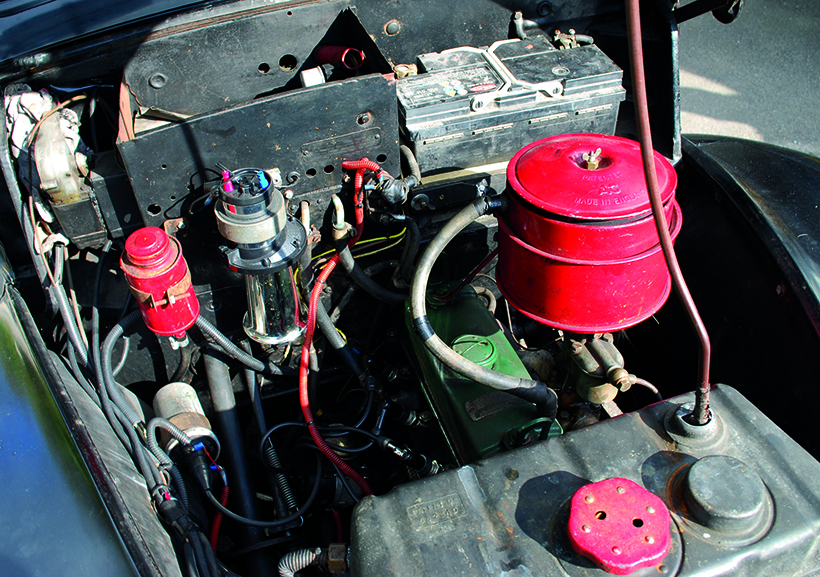
The 1,200cc engine is variously described as the first version of the BMC B Series, because of its basically similar design to what came afterwards, or the B Series engine’s predecessor, because of some significant differences!
Motorcycle transporter
Classic motorbike enthusiast Grant Mason bought this 1951 A40 Pick-up about 18 months ago, to carry his AJS motorcycle. Seeing the tight space available in the back for the motorbike, I wondered how he’d known that it would fit? “My dad had the same type of AJS back in the 1950s, and I came across an old slide photo of him with it in the back of the A40 Devon pick-up,” explained Grant.
“I looked around for quite a while before finding this one for sale in a scrapyard near Chichester, run by a bloke who’s into classic cars. But then, rather like buses, two more came along just after I’d bought it, owned by a chap not far from where I live. Frankly, they were probably better than this was when I got it, but it’s pretty well sorted now.”
When bought, the front was painted black, but the rear, pick-up body was finished in blue. Grant thinks that the rear might have come from another A40 pick-up at some point. “It just looked odd, so I decided to give it a cheap respray,” he told me. Bodily, the truck was very solid, with no rust. In fact, Grant only needed to rub it down before applying fresh paint. “I wanted it to look used, not over-restored, as that was my approach with the AJS. I also don’t want to worry about it getting the odd ding when I take the bike in and out.”
The AJS, which Grant has owned for about 10 years, had been sitting in a shed for nearly 50 years and was completely rusty. As that was finished in a satin black, Grant decided to stick to the same colour for the A40, particularly as the front half was already that colour.
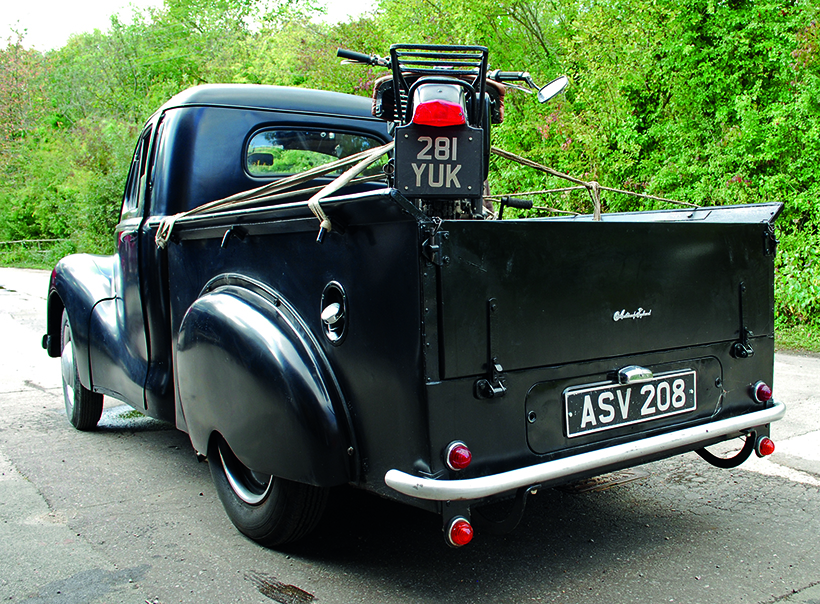
When the pick-up was purchased, the rear bodywork was blue, and may have come from another vehicle. It’s now been repainted to match the rest but, with a working vehicle finish, rather than a show-winning one.
Bumper options
A variety of different bumpers seem to have been fitted to A40 commercials over the production run, from curved, chromed ones to painted, square metal versions. I some cases, there was no bumper fitted at all. The rear bumper on this one was actually home-made by Grant, by bending a bit of scaffold bar, to replace the flat, square one that was on when he got bought the vehicle. Now it certainly looks the part; so much so that, at first, I thought it was an original fitment.
The Austin has a 1,200cc engine, as was originally fitted, although Grant thinks it has been changed at some point. At first the head gaskets kept going, so now he’s fitted a new copper one which seems to have cured the problem. “For a while, it seemed like I would sort out one problem, only for another to then appear straight afterwards,” Grant laments.
“The radiator was blocked, the fuel tank was full of rust, but worse, I found that, although the chassis had previously been shot-blasted and refurbished, the split pins hadn’t been put back into the suspension casting nuts, and the whole lot was about to give way.” New HT leads have just been fitted, and the tappets adjusted as it had been running on three cylinders when bought, plus the head has been skimmed.
A big, lorry battery has been fitted at the moment, as something seems to flatten it over time, but Grant hasn’t yet been able to track down why. A former owner had installed an alternator in place of the original dynamo, but Grant had to fabricate an adaptor to make it fit better. A previous owner had also changed to a side exhaust, although they had used a motorbike part, so Grant has replaced that as well, but he’s retained the side-exit set-up as it seems to work OK.
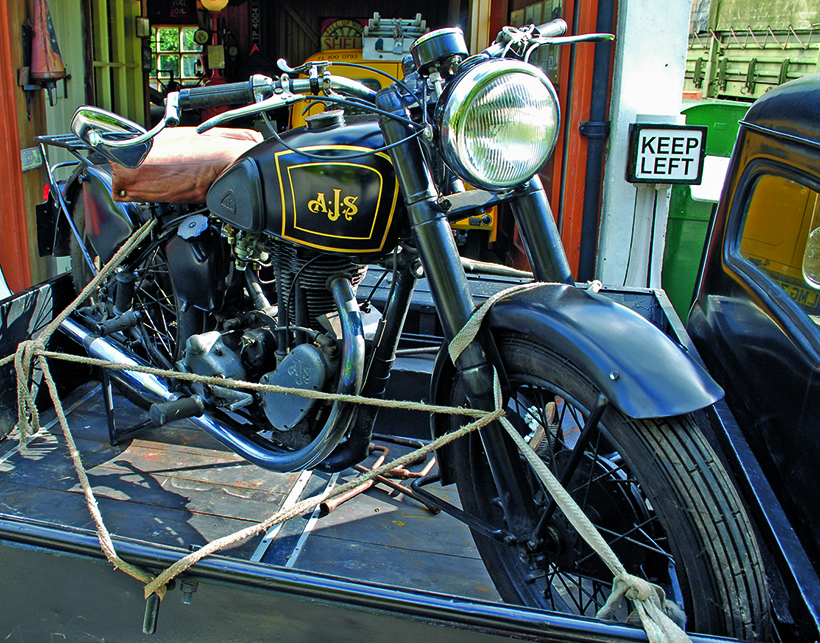
What it was bought to do. Grant knew his AJS would just about fit an A40, as his father owned an identical bike in the 1950s, and there’s a surviving photo of that bike in one of these pick-ups.
The gearbox is a four-speed unit with a column shift, which mostly works fine, although sometimes it can be reluctant to go into first gear. “You just have to put it in second and then you can ease it into first, or most of the time you can start off in second, anyway.”
Specialist assistance
Grant joined the Austin Counties Club for assistance with spares, finding it very helpful. He has also bought an Austin Somerset spares car, so he has another engine, gearbox and higher-ratio rear differential available should the need arise. “I might fit the Somerset diff to allow a slightly faster cruising speed, although it isn’t too bad as it stands,” notes Grant. It will do 55-60mph, although it’s not so comfortable at that speed. “The brakes are actually pretty good, and perfectly adequate for the A40s performance but, as always, the key is to drive according to the vehicle’s capabilities.” Also, the steering has been tightened up so it’s not as wayward at speed as it was when the pick-up was acquired.
Grant learnt to drive in an Austin A35, which came from his dad’s scrapyard, so it seems fitting that he should have another scrapyard-found Austin. “I’ve owned all sorts of things over the years, though, including Scimitars, Mk1 Capris and Jags. My dad and I also used to race stock cars. He was one of the top boys, although I was less successful; the front of my car always seemed to have a magnet fitted, which dragged me into the fence!” laughed Grant.
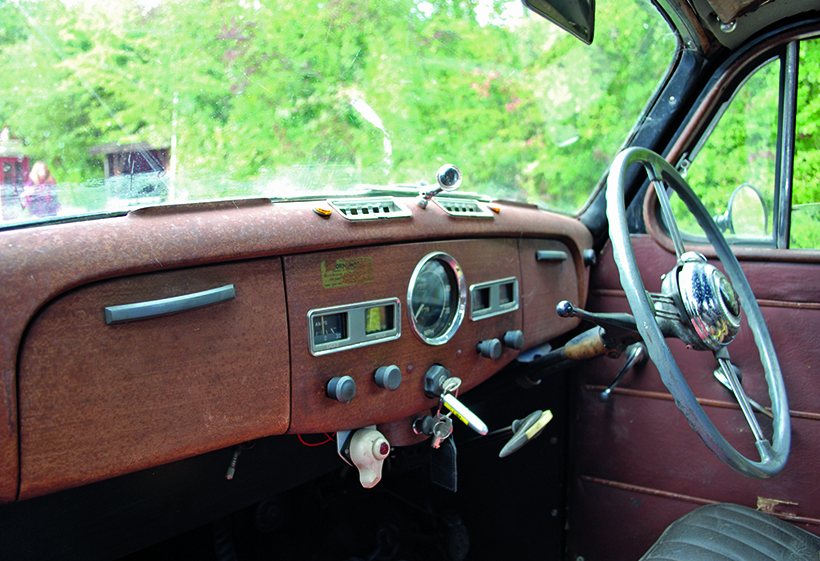
The interior is now very presentable, although a new headlining is still on the ‘to do’ list.
Inside, the seat back looks to be original, but Grant thinks that the seat squab has been replaced. When bought, there were no mats or carpets inside the pick-up. I was surprised to learn that new carpet sets are readily available on the internet, and so I have a set of those fitted now.
So, are there any remaining jobs to do? “The headlining needs replacing, and you may have noticed that there aren’t as many chrome strips on the front grille as there should be.” Grant has the replacement strips, but hasn’t been able to find any suitable clips to fit them with. Other than that, he just plans to keep using his A40 Pick-up and AJS combo which is, of course, exactly what it was bought for.
Special thanks to Grant Mason for taking the time explain the story of his Austin (and AJS), and to Amberley Museum, in West Sussex, for providing the photoshoot location. When such things are allowed again, it’s well worth a visit.
For a money-saving subscription to Classic & Vintage Commercials magazine, simply click here
